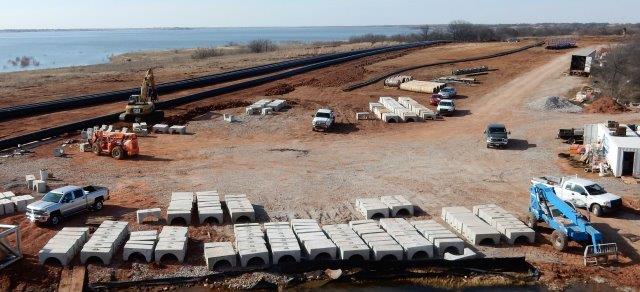


SNGD will own the new plant and be responsible for procurement, project management and operations of the new facility, fulfilling important principles of self-determination. The investment in new wastewater treatment will greatly reduce impacts to the ocean environment by significantly improving the quality of effluent which will meet more stringent modern wastewater standards far into the future. It also has additional capacity to tie in nearby future developments within the District of Sechelt.

The additional capacity this plant provides makes it possible for the shíshálh Nation to develop and connect future high-density residential housing developments. This new replacement plant and improved outfall will serve 91 connected residential units and support the conversion and connection of 88 buildings, which currently rely on septic wastewater systems. The current wastewater treatment plant, owned and operated by sNGD for the past 26 years, has reached its end of life and requires replacement. The investment will serve the shíshálh Nation, which represents a population of more than 1,500 members, and lessees on shíshálh Nation Lands (Tsawcome) No. The plant will be located on shíshálh Nation lands near Sechelt, British Columbia and will play a critical role in enabling economic growth, protecting the coastal environment, and safeguarding public health through improving the outfall. The Department of Water Resources and the State Water Board announced the first permit approved under a new pilot program to accelerate groundwater recharge, for a project in Merced County, and the State Water Board announced its first five-year temporary groundwater storage permit for a project in Sacramento County.Shíshálh Nation – Today, the Canada Infrastructure Bank (CIB) and the shíshálh Nation Government District (sNGD) announced financial close on an agreement, which will see the CIB lend more than $6 million to support a new Port Stalashen Wastewater Treatment Plant through its Indigenous Community Infrastructure Initiative. Last week, the Administration announced two developments to streamline permitting for stormwater capture efforts. In the 2023-24 state budget, Governor Newsom is proposing an additional $202 million for flood protection and $125 million for drought related actions. This budget funding includes $500 million that will be provided in 2025-26 to help ensure strategic water storage projects can be completed. Modernizing water conveyance Infrastructure across the state, including the Delta Conveyance Project.Supporting reservoir repair and expansion to boost water storage above and below ground.Maximizing stormwater capture through new projects.Fast-tracking groundwater recharge efforts by streamlining permits.Advancing clear, ambitious targets to build drought and flood resilience, including increasing annual groundwater recharge capacity by 500,000 acre-feet.Leveraging the more than $8.6 billion committed by Governor Newsom and the Legislature in the last two budget cycles to build water resilience, the state is taking aggressive action to prepare for the impacts of climate-driven extremes in weather on the state’s water supplies:

“We’re expediting projects across the state to maximize stormwater capture and storage above and below ground during times like these, reshaping our water systems for the 21st century and beyond.” “California isn’t waiting to act – we’re moving aggressively to modernize how we capture and store water to future-proof our state against more extreme cycles of wet and dry,” said Governor Gavin Newsom.


 0 kommentar(er)
0 kommentar(er)
